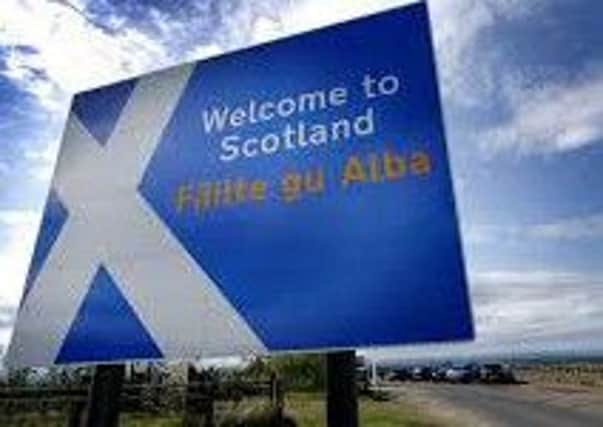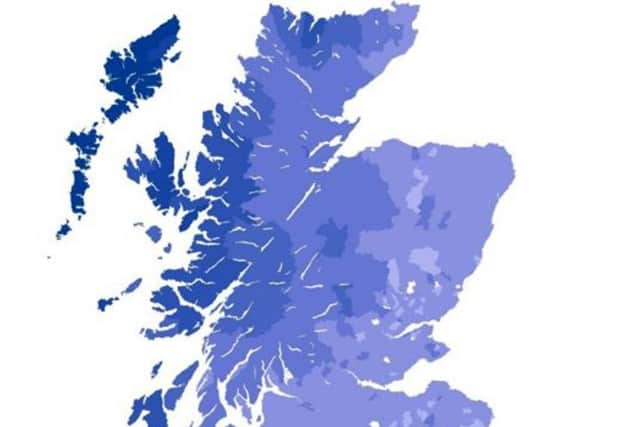Gaelic speakers map: Where in Scotland is Gaelic thriving?


A new map from National Records Scotland highlights where Gaelic in Scotland is being spoken and where it is dying out.
It comes as local authorities across the country come up with their plan on how to promote the language in line with Scottish Government policy.
Advertisement
Hide AdLatest figures show that 87,503 people in Scotland have some Gaelic skills - down 5,300 on the figure recorded 10 years earlier.


Research looked how many poeple were able to speak, read and write Gaelic (37 per cent) to being able to speak the language (66 per cent) to being able to understand the language (27 per cent) but not able to speak read or write it.
Highland, Eilean Siar and Glasgow City have the largest numbers of people with Gaelic language ability, with these three council areas containing almost half (49 per cent) of those with some Gaelic language skills.
The largest cluster of Gaelic speakers is in Eilean Siar with 61 per cent of people aged three and over having some skills in the language.
In Highland it was 7.4 per cent and Argyll & Bute 5.9 per cent.
Glasgow City mirrored the Scottish average at 1.7 per cent.
Some of the lowest rated were found in Angus, Midlothian and Fife, where just 0.7% of residents were familiar with Gaelic.
Advertisement
Hide AdFigures released yesterday by National Records Scotlandare were drawn from information held in the 2011 Census and the data also showed the number of Scottish children who can speak Gaelic has risen slightly.
It found that while there was an overall decrease in speakers between 2001 and 2011, the number increased among younger age groups.
Advertisement
Hide AdFigures show 618 more people under the age of 18 spoke the language in 2011 than in 2001.
The proportion of people who can speak Gaelic increased slightly in younger age groups: from 0.53 per cent to 0.70 per cent for 3-4 year olds; from 0.91 per cent to 1.13 per cent for 5-11 year olds; and from 1.04 per cent to 1.10 per cent for 12-17 year olds.
A spokesman for the Gaelic board, Bòrd na Gàidhlig, which supports the language in Scotland, added: “It is very encouraging that the decline previously seen has almost stabilised and that there has been growth in Gaelic speakers between the age of three to 19. This is evidence of the successes of Gaelic-medium education.”
for people aged 65 and over, the proportion fell from 1.8 per cent in 2001 to 1.5 per cent in 2011.
The Gaelic Language (Scotland) Act 2005 was passed by the Scottish Parliament with to secure the Gaelic language as an official language of Scotland commanding equal respect to the English language.
Consultation is underway on how to boost best the language between 2015 and 2020.
Advertisement
Hide AdTOP 5 COUNCIL AREAS FOR GAELIC LANGUAGE SKILLS (by percent of population)
EilEan Sar 61.2 16,489
Highland 7.4 16,596
Argyll and Bute 5.9 5,550
Glasgow City 1.7 9,469
Stirling 1.6 1,360
SCOTLAND 1.7 87,056
BOTTOM 5 COUNCIL AREAS FOR GAELIC LANGUAGE SKILLS (by percent of population)
South Lanarkshire 0.7 2,106
Midlothian 0.7 546
South Ayrshire 0.7 733
Dumfries and Galloway 0.7 968
North Lanarkshire 0.7 2,127
SCOTLAND 1.7 87,056